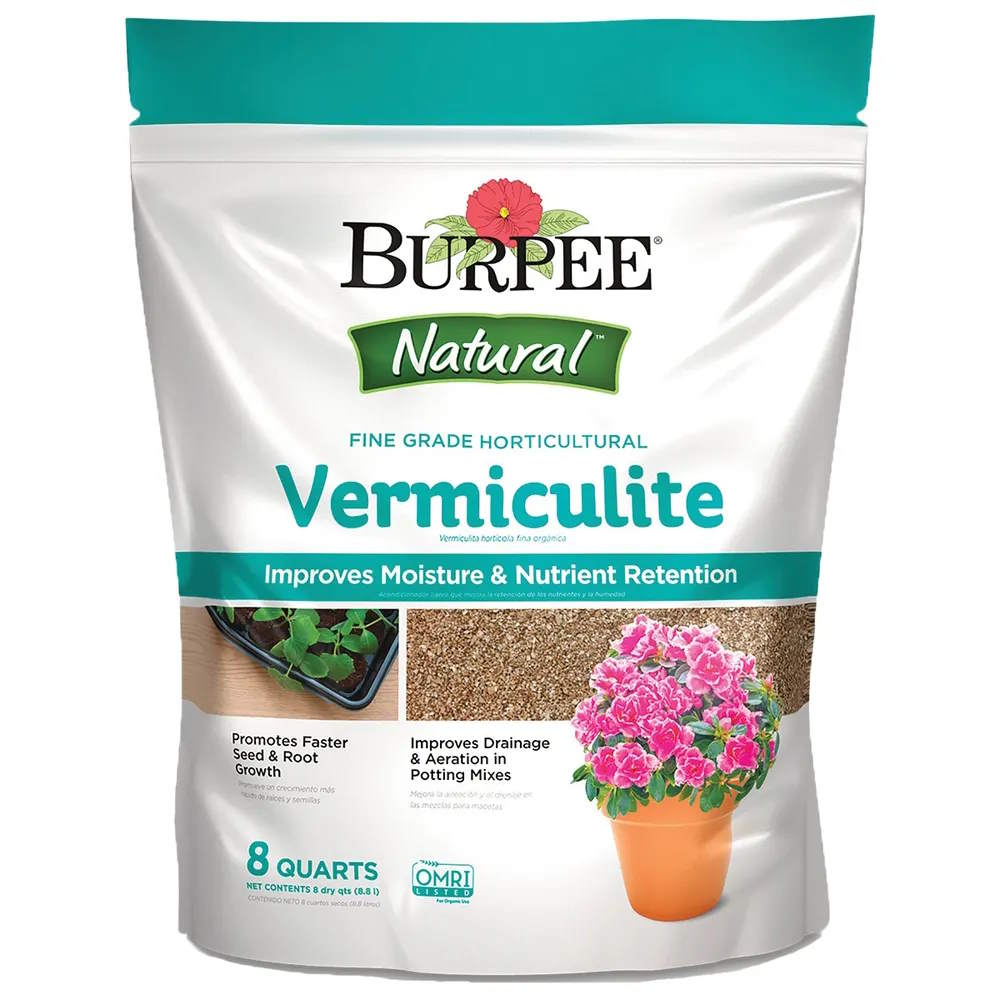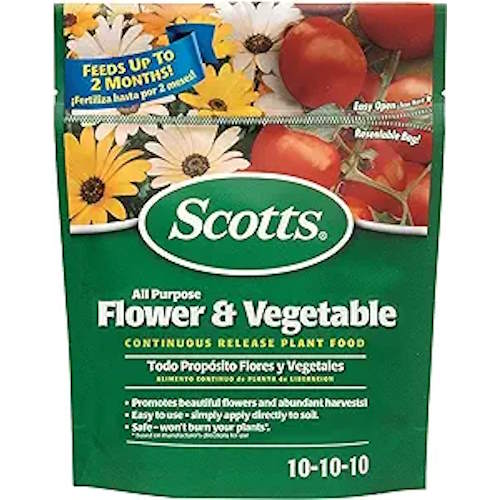How to grow marigolds in pots – 5 steps to guarantee blossoming plants in a container
Tips for choosing the right pot for different types of marigolds, and how to provide a good care routine
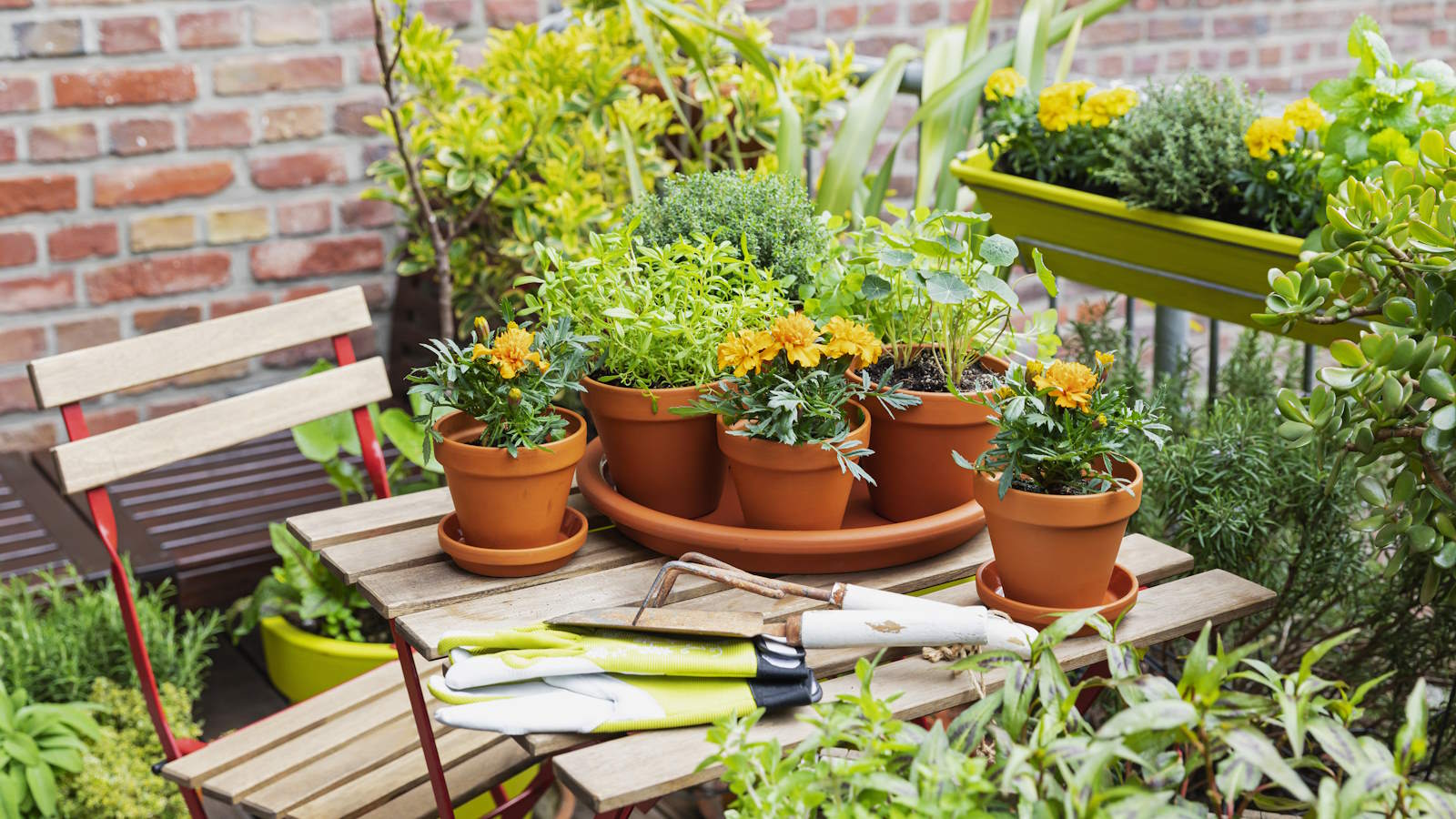

Marigolds are hugely popular flowers to grow and can provide stunning pops of bright color in any backyard. The annual plants come in a wide array of sizes, from a few inches to several feet tall, and all can be grown in pots successfully.
A real bonus for marigolds is that they are not just stunning, they are also beneficial. I have grown marigolds in containers in gardens for a show, so the visitors can enjoy their vivid blooms, but also to benefit crops in vegetable gardens as they help repel pests.
There are some important areas to get right if you want to grow marigolds in containers and below are five key factors that will help you have happy plants and a fantastic display of flowers from marigolds in pots.
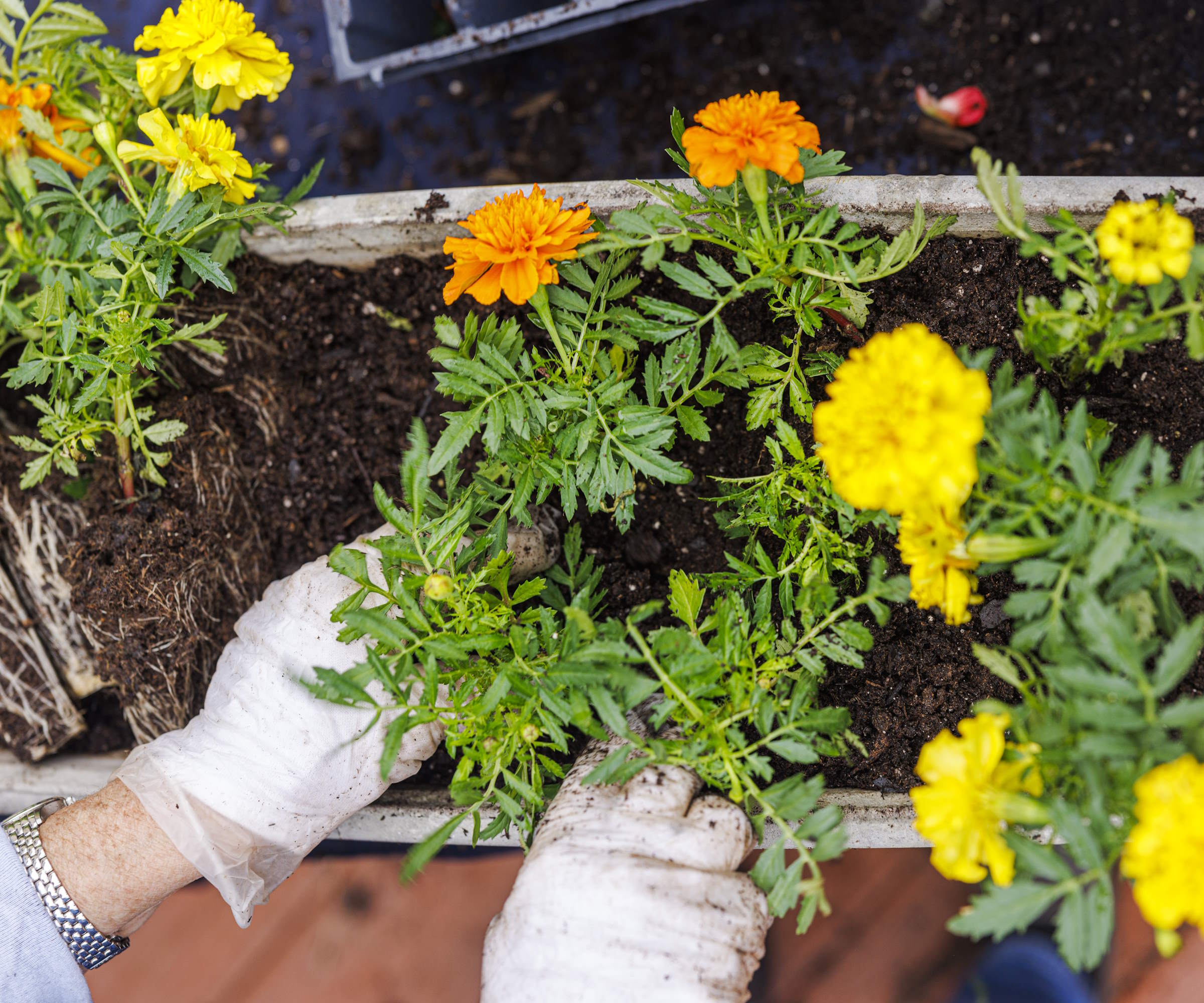
Plant marigolds in pots in spring for glorious summer displays
How to grow marigolds in containers - 5 steps for success
If you are short of ground space, there are real benefits to growing marigolds in pots as part of a container garden. It allows you to enjoy a display of marigolds blooming on a deck, patio, or balcony, and the plants can be simple to maintain in containers. Get the pot, soil, and care routine right and you can enjoy success with any type of marigold you want.
Pick a good pot and potting soil
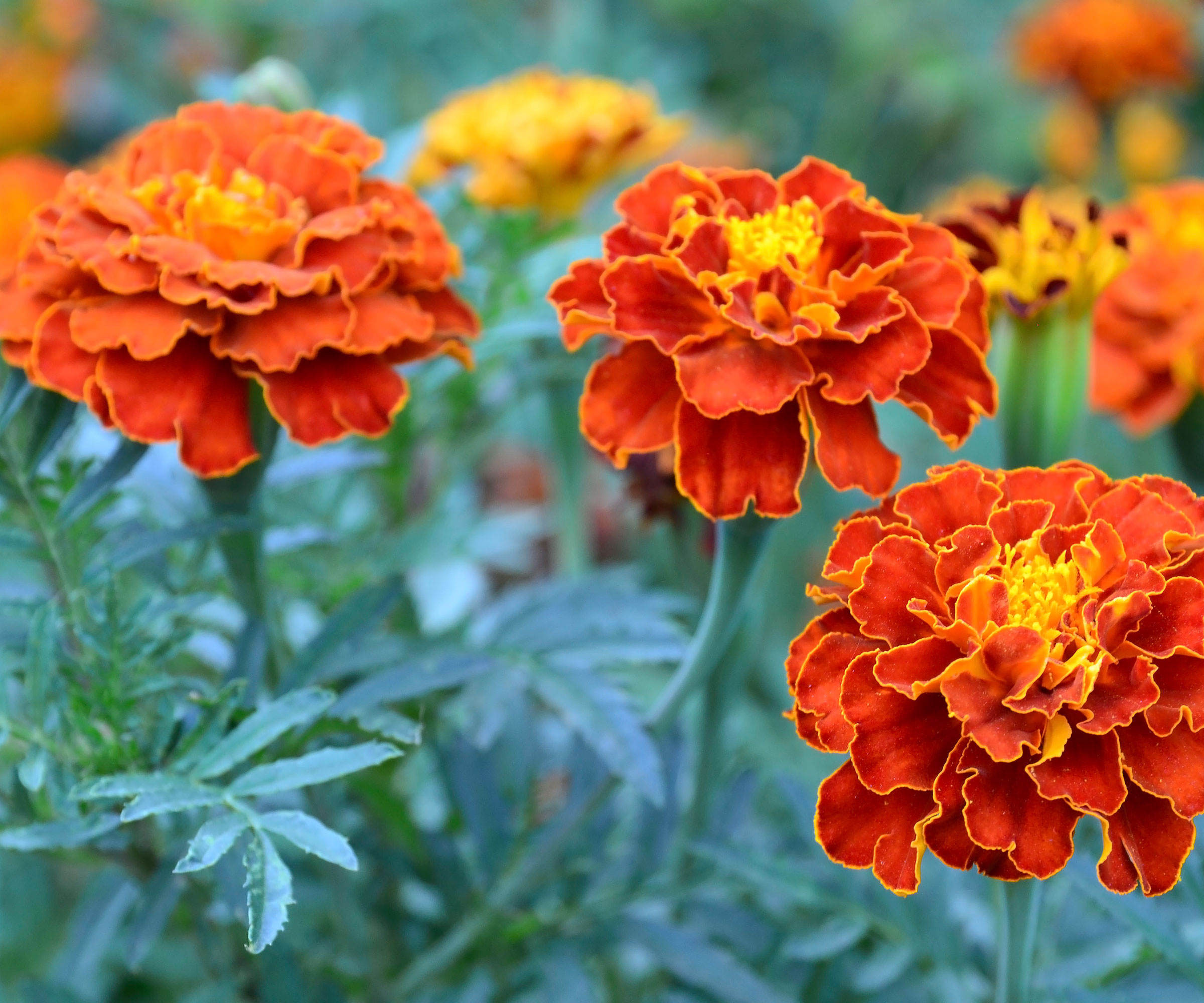
Marigolds come in various warm colors and in different sizes
There are different types of marigolds and all can grow successfully in a pot. However, the type will dictate the container size needed to ensure the plants have all the room they need to thrive. The three common types of marigolds are French, African, and Signet - sometimes called Gem - and they vary in size from 3-4 feet tall down to under six inches.
African marigolds (Tagetes erecta) are the largest of the species of marigolds and, unsurprisingly, need the largest container if you want a display of these marigolds in pots.
Aileen Carrol from Van Winden’s Garden Center in Napa Valley advises: ‘Make sure you plant it in a big pot. It would be happy in something like a half-wine barrel or an 18-24-inch container. African marigolds have some of the biggest blooms and these plants often grow taller than they do wide.’
French marigolds (Tagetes patula) are smaller, reaching close to 6-12 inches in height, and ideally want a pot that is 8-12 inches in diameter and depth. Finally, signet marigolds (Tagetes tenuifolia) are the tiniest type and can be happy in a 6-8 inch container.
The container or planter can be in any material but drainage is vital so it needs holes in the bottom of the planter to allow excess water to drain away. Marigolds will not be happy sitting in soggy soil and it risks root rot.
Fill the pot with rich and free-draining potting soil for container gardening. Adding a handful of horticultural grit, perlite, or vermiculite into the potting mix can help boost the drainage. Incorporating some slow-release and balanced plant food will also provide vital nutrients to the plant over the season to help it bloom strongly.
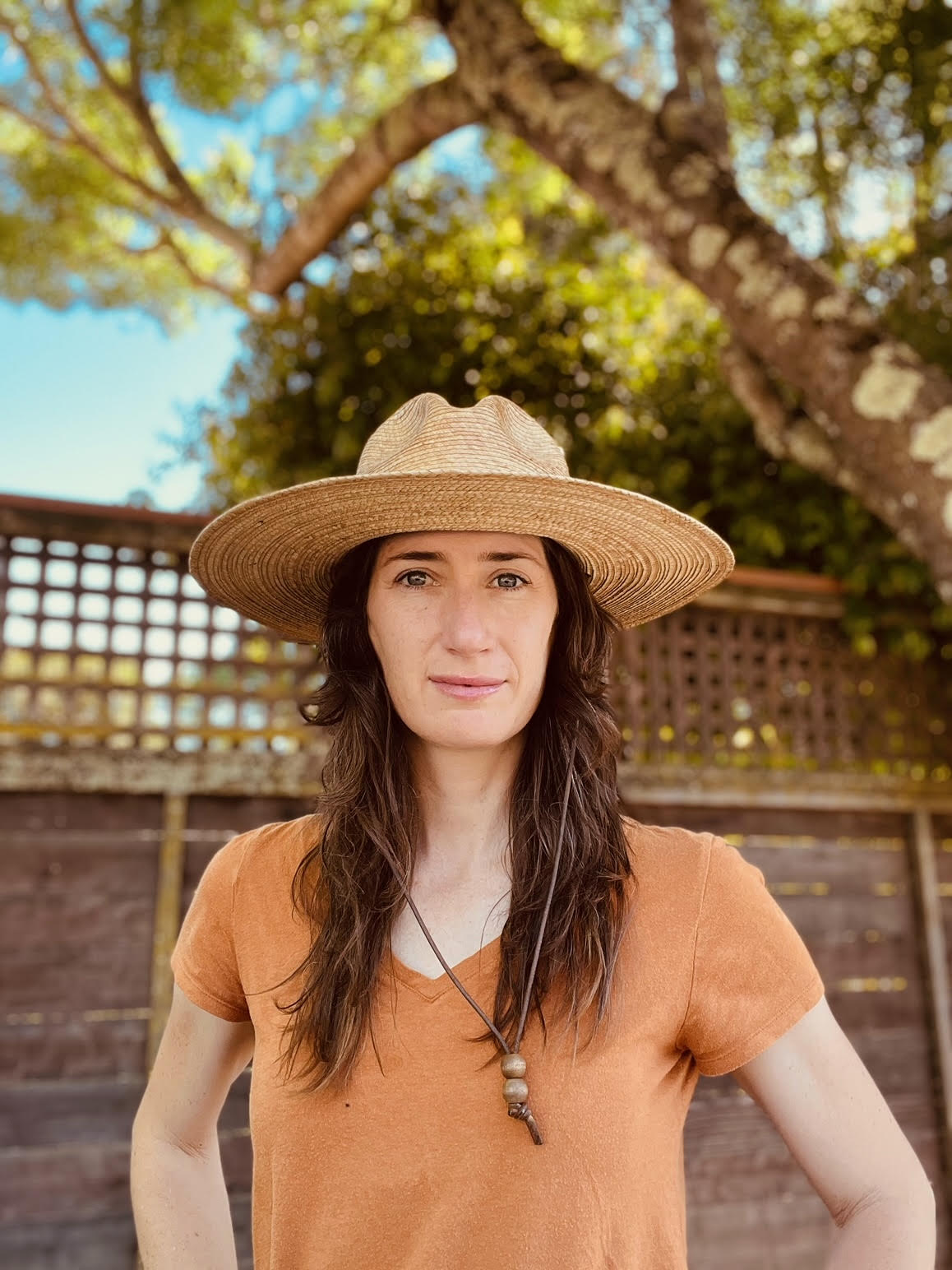
Aileen Carroll is a garden consultant based in Napa Valley, California. She specializes in container gardens and edible landscapes.
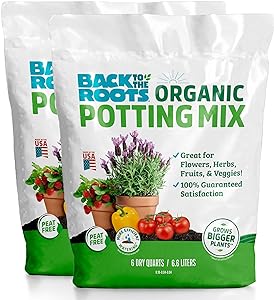
An organic potting soil with mycorrhizae, coconut coir and yucca extract that has all the nutrients needed for plants in pots.
Choose to sow seeds or plant young marigolds
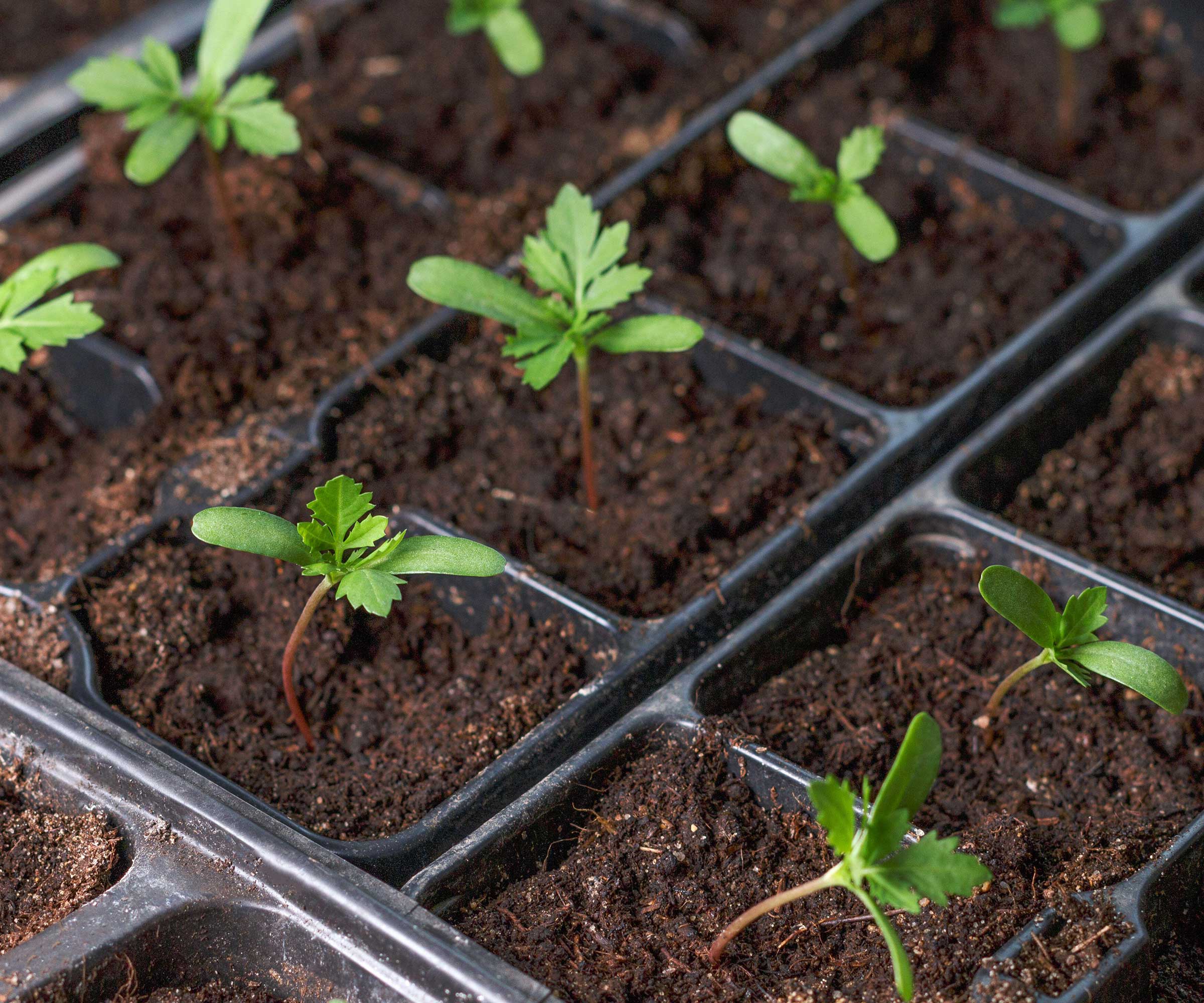
Grow your own marigolds from seed for pot displays
Marigolds are commonly available from garden centers or nurseries in spring to plant directly into any container garden. Buying young plants is a quick and easy way to get started, however, marigolds are fast-growing flowers to grow from seed and it can be a simple and enjoyable way to start your plants.
Start marigold seeds indoors in trays or modules around 6-8 weeks before your last frost and they will germinate quickly at temperatures of 70-75°F in a greenhouse or on a warm windowsill.
Once the seedlings are large enough to handle, they can be potted up into small pots. After hardening off young plants in a cold frame, or by moving them outdoors during the day, you can transplant seedlings into their final container after the risk of frost has passed.
When planting marigolds into the pot, whether purchased plants or ones you have grown, make a hole in the soil and place the young marigold in. Fill in and firm the soil around the plant and then give it a good amount of water.
Discover the range of marigold plants and seeds available at Burpee
Find the best location
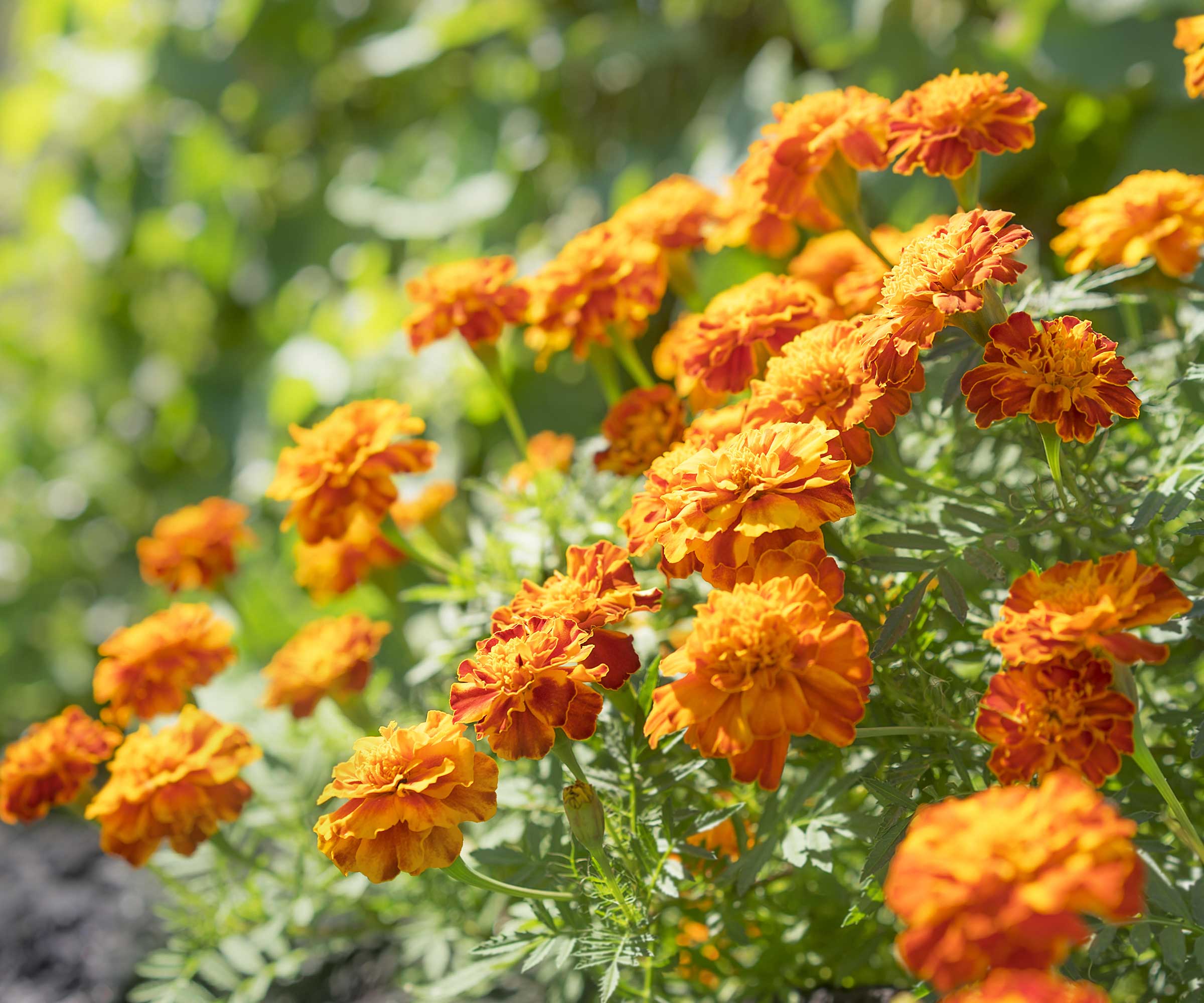
Place a pot of marigolds in a really sunny spot in the garden
Marigolds want to grow in a sunny spot, ideally one that gets at least six hours of sunlight each day. The more sun you can give marigolds the better, as the flowering will suffer if the plants are in shade.
To get the best blooms from your marigolds, identify the sunniest spot in your backyard and that will be the perfect place to put your container of marigolds. Taller African marigolds may benefit from being protected from strong winds with stakes.
Water and feed plants often
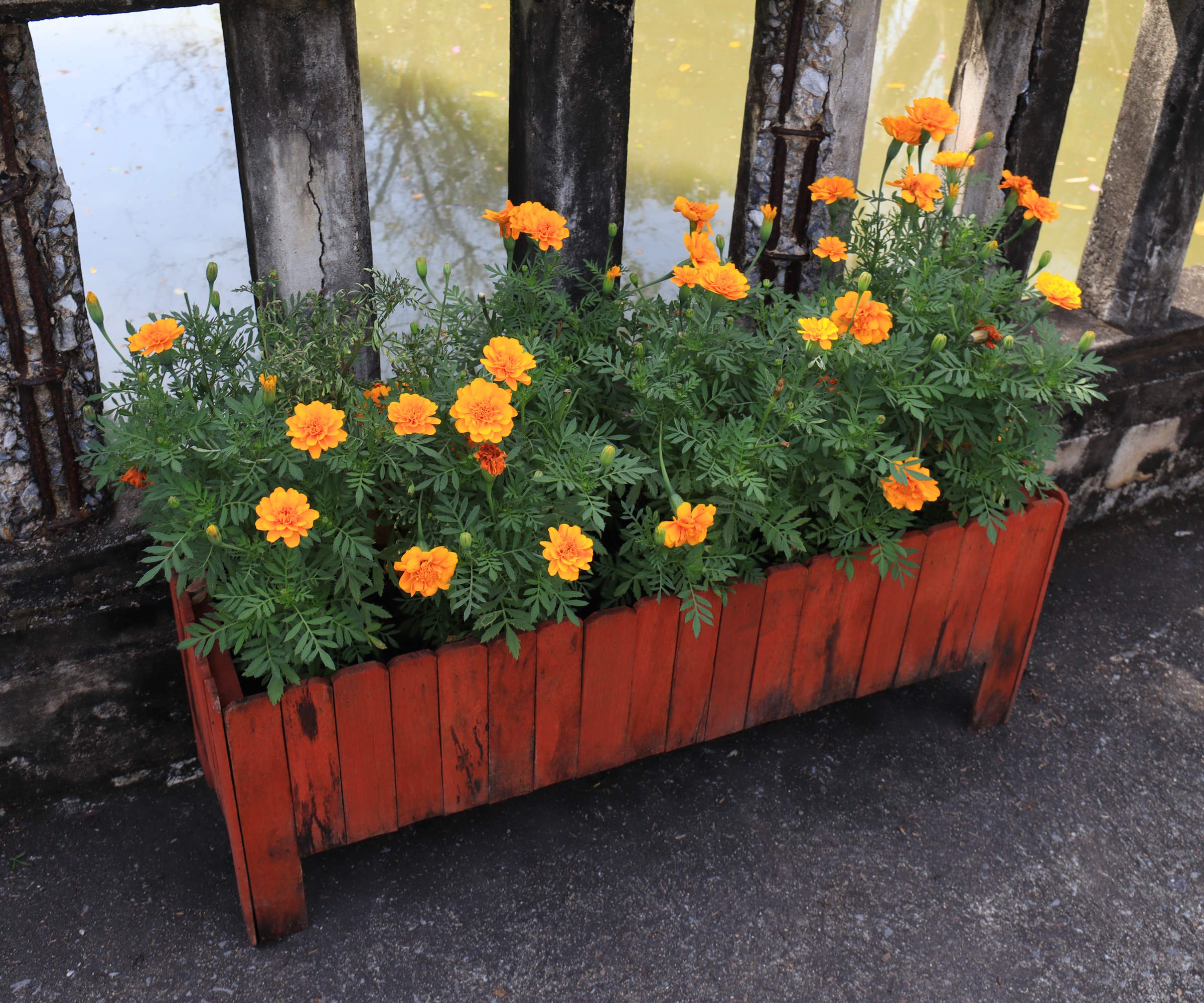
Marigolds can look great in different shapes of pots and planters
Watering will be an important part of the life of your marigolds. They want to be kept consistently moist for the first few weeks to get established and then monitored regularly throughout the season for when to water plants.
Marigolds in pots will need more watering than plants growing in beds or borders in the backyard. So it makes judging how often to water marigolds in pots very important. When watering plants in containers, it is advisable to check regularly the moisture levels an inch or two down in the soil. If the soil feels moist, hold off from watering, but if it is dry under the surface it is time to water.
Marigolds do want to be kept moist, but not over-watered, and it can mean a lot of watering during the summer months to keep them at their best. ‘During hot weather or if your pots are in a sunny location, you may need to water them more frequently, possibly every day or every other day,’ says Petar Ivanov, gardening and plant expert at Fantastic Gardeners.
When it comes to how to water plants, it is more beneficial to water your plants deeply and less often than little and often. Keep any watering schedule consistent and be attentive to keep the soil moist during the summer.
Fertilizing marigolds is another key maintenance task to help you get the best blooms. As well as adding a slow-release fertilizer into the potting mix, marigolds in pots will also benefit from regular feeding throughout the season
‘Marigolds are relatively low-maintenance and don't require heavy feeding,’ adds Peter Ivanov. ‘However, you can apply a balanced, water-soluble fertiliser diluted to half strength every 2-4 weeks during the growing season.’

Peter Ivanov is a gardening and plant expert who has been working at Fantastic Gardeners for eight years. As one of the company's top-performing experts, he now manages over six teams of gardeners, delivering stunning landscape results and fostering a deep connection with nature through his work.

A water soluble fertilizer full of essential nutrients, it instantly feeds to grow bigger, more beautiful plants.
Deadhead spent blooms regularly
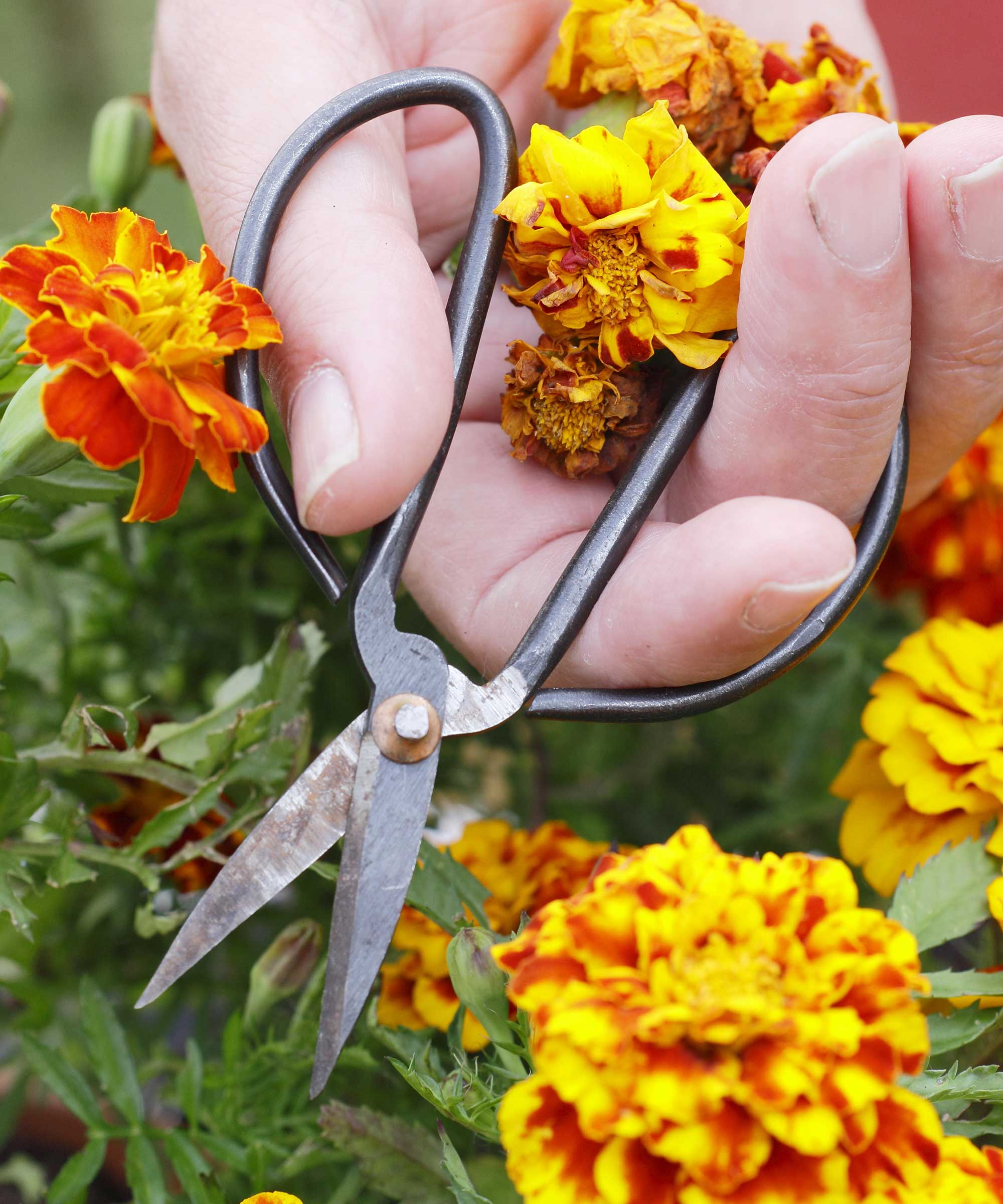
Deadhead marigolds growing in pots for longer displays
While not a vital task, deadheading marigolds is extremely beneficial as it helps you get a long display of blooms throughout the season. Old flower heads should be snipped off a few inches down, above a healthy set of leaves, with a pair of sharp and clean pruning shears.
Not only does deadheading marigolds reward you with the longest flowering season possible, but it also stops the plants from self-seeding around the yard and prevents plants from looking too unkempt.
FAQs
Can marigolds grow in window boxes?
Marigolds are suitable to grow in window boxes, whether on their own or as part of a mixed planting - with ornamental or edible plants. The window box needs to be deep and wide enough to accommodate the particular type of marigold and you must give the marigold adequate space to develop into. It makes African marigolds less suitable for window boxes, while French and signet types are more suited due to their smaller stature.
Do marigolds grow better in pots or in the ground?
Marigolds are highly versatile plants that can happily grow in containers, raised garden beds, or flower beds and borders. The choice is up to the gardener and often depends on a person’s space and set-up. Get the container size, soil, and care routine correct and marigolds will be as happy growing in pots as they could be in the ground.
As well as looking great, marigolds are fantastic plants for companion planting, as they are one of the best repellent plants to add to any kitchen or vegetable garden. Marigolds keep bugs away from your crops, they are a fly-repellant plant and a great choice to get rid of aphids and other common pests. Placing a container of marigolds around tomatoes, cucumbers, or eggplants means you have a great-looking natural insect repellent at your disposal.
Sign up to the Homes & Gardens newsletter
Design expertise in your inbox – from inspiring decorating ideas and beautiful celebrity homes to practical gardening advice and shopping round-ups.

Drew’s passion for gardening started with growing vegetables and salad in raised beds in a small urban terrace garden. He has worked as a professional gardener in historic gardens and specialises in growing vegetables, fruit, herbs, and cut flowers as a kitchen gardener. That passion for growing extends to being an allotmenteer, garden blogger, and producing how-to gardening guides for websites. Drew was shortlisted for the New Talent of the Year award at the 2023 Garden Media Guild Awards.
-
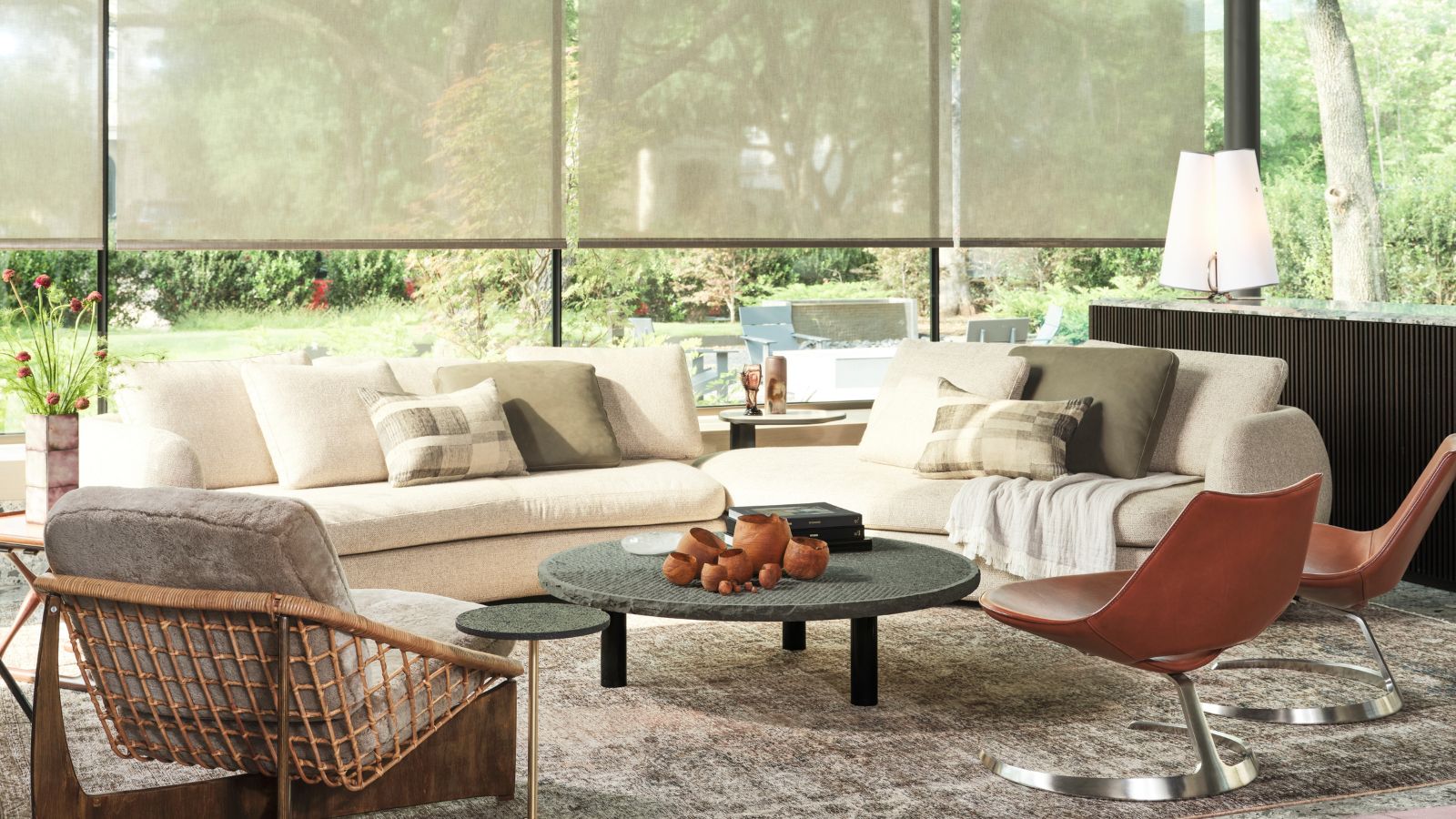 Thoughtful modernism – how one Dallas home makes bold contemporary design feel warm, welcoming, and comfortable
Thoughtful modernism – how one Dallas home makes bold contemporary design feel warm, welcoming, and comfortableWith its mix of textural finishes and carefully curated furnishings, this modernist home is a refreshing retreat
By Karen Darlow Published
-
 'Wick away the ick' – 6 things people with clean laundry rooms always do to make this hardworking space shine
'Wick away the ick' – 6 things people with clean laundry rooms always do to make this hardworking space shineThese tips on how to clean your laundry room will banish grime
By Seraphina Di Mizzurati Published
